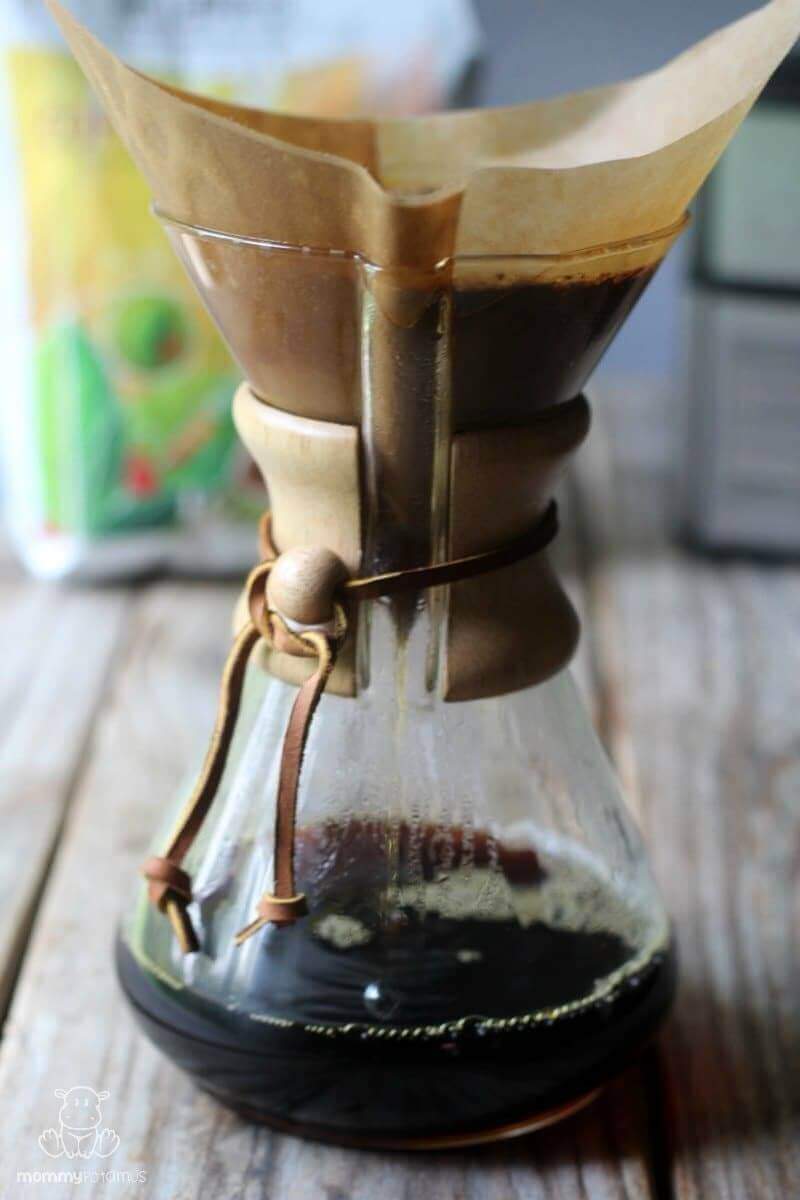
Coffee is my husband’s love language. He’s an early riser, so almost every morning he greets me with a freshly made cup.
It’s a tradition he started back when I was sleep deprived with our babies. He couldn’t always help me get more sleep, but he could get me coffee.
I’m mostly function over form these days, which is why even I’m surprised that I’m writing a review of a coffee maker. I mean, it’s coffee, aka patience in a cup. Who really cares what it tastes like?
Turns out, I do.
Years ago, in my search for a BPA-free coffee maker, I turned to this French press. I liked that it was mostly made of heat resistant glass and stainless steel, with just a little bit of plastic that would touch the coffee as you poured it through the spout.
Then my husband brought home a Chemex for our writing nook and my first cup was amazing. I honestly didn’t know coffee could be so smooth, and wondered how brewing the same exact coffee beans differently could have such a noticeable affect.
Turns out, the Chemex filters out acidic and bitter compounds that most coffee makers don’t. It also filters out oils, which mean the the coffee can be brewed and stored in the fridge for later use – maybe for coffee ice cream or a frozen mocha – without the oils going rancid.
Cleanup is easier than any coffee maker I’ve ever used, and it’s beautiful, too. One is actually on display at the Museum of Modern Art!

How To Brew Coffee With A Chemex
I tend to eyeball things rather than use exact measurements when brewing coffee, but in general you’ll want to use about 1-2 tablespoons medium/coarsely ground coffee per 5 ounces of water. Here’s how to brew a cup:
- Put some water on the stove to boil. Once it boils remove it from heat and allow it to cool a bit. According to brewmasters, the best temperature to brew coffee at is about 200F.
- Place a Chemex coffee filter over the carafe, making sure the thicker side of the filter (which is three layers) is covering the spout area. Some people rinse their filters with hot water before using – I don’t. 🙂
- Pour your coarsely ground coffee in.
- Pour just enough water over the grounds to saturate them and wait for thirty seconds, then pour the remaining water over the grounds.
- Once the water has made it’s way through the filter, place the filter in your compost or garden (if you have one) and enjoy!
Where To Buy A Chemex Coffee Maker
I have this 8 cup Chemex, but there is a 6 cup option as well. Don’t forget to get some coffee filters, too! (Update: A reader just told me that the CoffeeSock reusable coffee filter is compatible with Chemex coffee makers. I just ordered one!)
Want a FREE ebook of non-toxic cleaning recipes that WORK?
I’ve created a free ebook for you as a gift for signing up for my newsletter. 7 Non-Toxic Cleaning Recipes That Really Work covers seven recipes that you can make in just a few minutes each for squeaky clean windows, sparkling dinnerware, lemon-fresh countertops, and more. Subscribe to my newsletter below and you’ll be redirected to a download page for immediate access to this PDF ebook.




